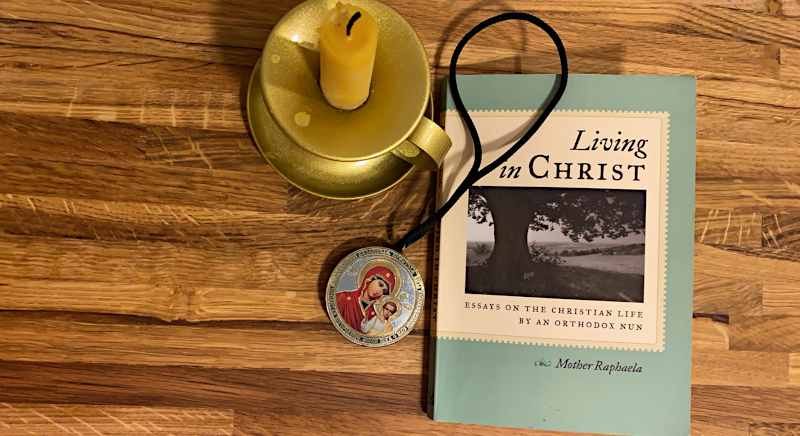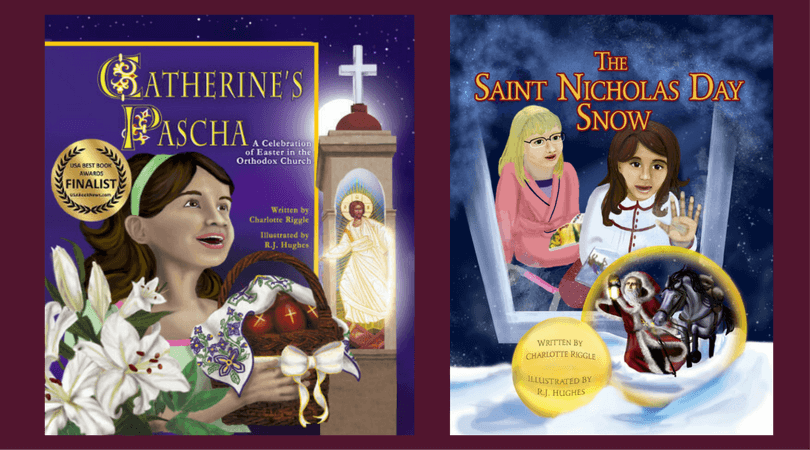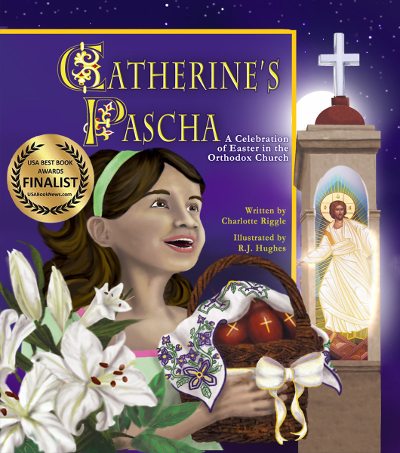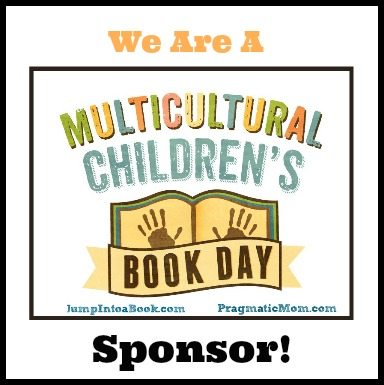I’ve never been a book club person. When my kids were young, I didn’t have the time or energy for a book club. There were years that I barely had time to read at all. Those were hard years. My kids are all grown now, and even though a couple of them still live at home, there’s more time for me to do things that nourish my heart and mind. Like the Orthodox Christian Book Club on Facebook. If you’re on Facebook, you should definitely check it out!
The January book selection is Living in Christ, collection of essays on the Christian life by Mother Raphaela of The Holy Myrrhbearers Monastery in Otego, NY. You can watch recordings of the earlier discussion on Facebook. Katie Reetzke leads the group, and on January 4, she shared her thoughts on the Intro through Chapter 4. Father Lucas Rice and Katie discussed Chapters 5 through 9 on January 14, and they’ll be back to discuss the final chapters of the book. In the mean time, join Katie and me on January 19 to talk about Chapters 10 – 14, or watch the recording later.
The book itself
Before we talk about what’s in the book, let’s talk about the book itself, as an object.
Do you always have a book in your pocket or purse, just in case? Do you like to have something you can read in small bites, when the opportunity arises? Do you read while you’re sitting in the car waiting for a train to pass, or standing in line at the grocery store? If you answered yes to any of these questions, Living in Christmight be the perfect book for you. It’s small (5 inches by 7 inches), and each essay is about 5 pages long.
On the other hand, how’s your vision? If I had picked up Living in Christ in a brick-and-mortar bookstore, and opened it up, I might have closed it and put it back on the shelf. The type is tiny. I can manage it okay with my +2.50 readers, but my eyes don’t like it. Still, I got it online, and I’d promised Katie that I’d lead part of the discussion for the January book club, so I made my way through it.
Putting it in context
Because the type was so tiny, I decided to skip the introduction. The first couple of sentences suggested that it was an introduction to Mother Raphaela and the Holy Myrrhbearers Monastery and not to the book.
And by the time I was 3 or 4 chapters into the book, I was a bit confused. The chapters didn’t seem to flow from one to another. They weren’t connected in the way I expected them to be. There were occasional references to feast days, without anything to explain why that feast day was being referenced. Each chapter seemed to stand in isolation from the others.
I read on. And finally, I went back and read the introduction. And, yes, the chapters do stand alone! Living in Christ is a collection of essays that Mother Raphaela had shared over the years in the newsletter from the Holy Myrrhbearers Monastery and in other publications. The context to those feast day references was the feast day itself – your December newsletter is likely to mention Nativity, you know?
So I went back and re-read the essays without looking for connections that weren’t there. To get the most out of this little volume, you’ll want to read each essay as stand-alone jewels rather than expecting them to fit together into a mosaic. You’ll want to spend time with one, looking at it from different angles, thinking about it, before moving on to the next.
The history of the essays
The fact that these essays were written for the monastery’s newsletter also explains why some of them show their age. The book was published in 1998, and the essays had been written over many years before they were collected into a book. So examples of technologies and current events aren’t current. That’s not a flaw, of course. It’s simply a reflection of the history of the essays.
I do wish that the editor of this little collection had started each essay by saying where and when it was originally published. That extra bit of information would have provided important context. It would have clued me in to the best way of reading these essays and added richness to the experience.
The monastic way
There’s one more bit of context that may be helpful when you read Living in Christ. In these essays, Mother Raphaela most often seems to be addressing women who are contemplating a monastic calling.
In the first essay in the book, “The Christian Way of Life,” Mother Raphaela describes the struggle to reconcile the good world that God created with the reality that “creation is no longer wholly beautiful and good.” She describes how we must all sometimes give up good things in order to reach for something better. She ends the essay with the statement, “This is the heart of Christian life. This is the heart of our monastic way.”
I’m not following a monastic way, of course. As I read the book, I needed to think about how I could apply Mother Raphaela’s words to the context of my own life. Sometimes the connection was clear. Sometimes it took a great deal of thought to see. And in a few cases, I concluded that a particular essay wasn’t written for me – at least not here and now.
And that’s okay. All of the essays are worth reading and pondering and coming back to over time.
Living in Christ: Chapters 10 – 14
“My” chapters for the book club are chapters 10 – 14. So let’s dive in.
Chapter 10: The Call to a Monastic Way of Christian Living
I suspect this chapter reads very differently, depending on whether you are contemplating a monastic vocation. If you are, this chapter is full of important information about what that is like, and what it means. The biggest takeaway for you is that, if you believe that a monastic life would be a terrible, horrible struggle, it’s likely not your calling.
For those of us who are not considering a monastic vocation, this chapter has something that’s equally important. In it, Mother Raphaela explains one of the most important ways we can support those we know who are living out the monastic way of life: Don’t offer them “treats” that they have freely and deliberately chosen to give up. It might feel like a kindness. Mother Raphaela assures us that it is not.
Chapter 11: Challenged by Freedom
This chapter is about the paradoxical freedom of monastic life. It brings to mind William Wordsworth’s sonnet, Nuns fret not:
Nuns fret not at their convent’s narrow room;
And hermits are contented with their cells;
And students with their pensive citadels;
Maids at the wheel, the weaver at his loom,
Sit blithe and happy; bees that soar for bloom,
High as the highest Peak of Furness-fells,
Will murmur by the hour in foxglove bells:
In truth the prison, into which we doom
Ourselves, no prison is: and hence for me,
In sundry moods, ’twas pastime to be bound
Within the Sonnet’s scanty plot of ground;
Pleased if some Souls (for such there needs must be)
Who have felt the weight of too much liberty,
Should find brief solace there, as I have found.
Mother Raphaela echoes this, saying, “an Orthodox monastery is not meant to be a prison or a concentration camp.” She explains how the ascetic disciplines function are indeed challenging. And the challenge, freely accepted, produces the true freedom of life in Christ.
Chapter 12: Healing and Monasteries
Part of the lore of the monastery is that it is where broken people go to be healed. And Mother Raphaela affirms that there is truth in that. She also affirms that we are all broken, and the monastery isn’t the right place for healing for everyone.
She notes that “certain people who want and need God’s healing are far too fragile for strong spiritual medicine.” She explains that, in an attempt to help these fragile, wounded people, monasteries sometimes become therapeutic communities, compromising their own calling.
That doesn’t mean that the monasteries should shut out broken people (or no one could go!). She does say that small monasteries and young monasteries may not be as able to help and absorb these people as larger, older monasteries. And she suggests ways of ministering to them that don’t involve making them part of the monastic community.
Chapter 13: Building Community
This is a very brief essay, only 3 pages. And it has been, for me, the most difficult essay in the book. I’m still wrestling with it. I’m still trying to understand what, exactly, Mother Raphaela meant, and how her words can have meaning in my own life.
She starts the essay by saying, “Fallen human beings cannot build community. We want to dispute or ignore such a statement,” and here I stop and say, Yes, that’s true! I want to dispute it. And then she continues, “but we cannot alter the fact or it’s reality.”
Is it a fact, though? Is it reality? My experience tells me otherwise. So what am I missing?
I think there may be two keys to understanding this brief essay. The first is the ambiguity of the word community. When I think about community, I think about neighborhoods where people borrow a cup of sugar from their next door neighbor and watch each others’ kids. I think about people responding to natural disasters by opening their homes and their barns and their wallets, and by showing up with food and chainsaws and whatever else is needful.
I think about those sorts of things, because that’s the context of community in my life. Mother Raphaela, on the other hand, is a nun and the abbess of a monastery. She may well be thinking primarily (although perhaps not exclusively) of a monastic community. Her thoughts may be more about making a monastery into a place of spiritual communion for those who live there.
Community and freedom
The other key to understanding Mother Raphaela’s thoughts on community may be found in her essay on freedom. I know that I just said these essays each stand alone, but bear with me. In the essay on freedom, she emphasizes how the ascetic labors of a monastic calling must be embraced with true freedom in order to yield joy, love, and contentment. These things can’t be forced.
And it seems to me that, in this essay, she applies the idea of freedom specifically to community building, whether in a secular or a religious setting. She is saying that community can’t be forced, either. She identifies the temptation to create rules and standards for each other. To build a community, we create an ideal, we measure each other against that ideal, and we try to force everyone else to fit into our ideal. We reject those who don’t measure up. We take away each others’ freedom in the name of the community.
Yet without freedom, whatever you end up with is not community. We can’t create true community, and we do harm when we try. We find true community, she says, only by entering into life in God, through prayer, and through death into eternal life.
Chapter 14: Work and Obedience
Mother Raphaela begins this essay by pointing out that work existed before the Fall. When God created Paradise for Adam, He intended for Adam to work in it. Paradise, she says, “was an idyllic situation, including, not in spite of, the work. Surrounded by beauty and harmony, knowing he was doing what he could do best, having the love and trust of those around him and the security of knowing his all-good and all-powerful Creator, Adam had the energy needed to meet each day with joy and the excitement of discovery.”
That resonates with me. Sometimes you’ll hear people say, “Nobody ever says, when they die, that they wish they’d spent more time working.” That might be true, if you’re thinking of work as a job where your work enriches someone else and leaves you without enough to live on. Work that is degrading and dehumanizing. But work doesn’t have to be that way. For Adam, it was joy. And I truly believe it can be for us, too.
Mother Raphaela says that part of our work, perhaps the most important part, is prayer. And this essay, more than the rest of the essays in this little book, contains practical advice that I can apply to my life. Advice that I can follow to engage in the work of prayer.
What’s next?
I’m looking forward to chatting with you in the Orthodox Christian Book Club about Living in Christ, and about the other books that Katie is lining up for us to talk about there!
Read More
The white cat and the monk: Jo Ellen Bogart and and Sydney Smith transform the medieval Irish poem Pangur Bán into a picture book (styled rather like a graphic novel) that will charm children and adults alike.
A table where strangers are welcome: It all started on the day that I found a leg in Mrs. Monagan’s closet. A human leg. Her husband’s leg.
Buy the Books!
Catherine’s Pascha
FINALIST IN THE 2015 USA BEST BOOK AWARDS
Catherine doesn’t like vegetables. She doesn’t like naps, and she doesn’t like it when her mom combs her hair. She loves hot dogs, chocolate cake, and her best friend, Elizabeth. Most of all, she loves Pascha! Pascha, the Orthodox Christian Easter, is celebrated in the middle of the night, with processions and candles and bells and singing. And Catherine insists that she’s not a bit sleepy.
Celebrate the joy of Pascha through the magic of a book: Catherine’s Pascha. Available on Amazon, Bookshop.org, and my webstore.
The Saint Nicholas Day Snow
Shoes or stockings? Horse or sleigh? Does St. Nicholas visit on December 6 or on Christmas Eve? Will a little girl’s prayer be answered? When Elizabeth has to stay at Catherine’s house, she’s worried about her grandmother, and worried that St. Nicholas won’t find her. The grownups, though, are worried about snow.
Celebrate the wonder of St. Nicholas Day through the magic of a book: The Saint Nicholas Day Snow. Available on Amazon, Bookshop.org, or my webstore.




